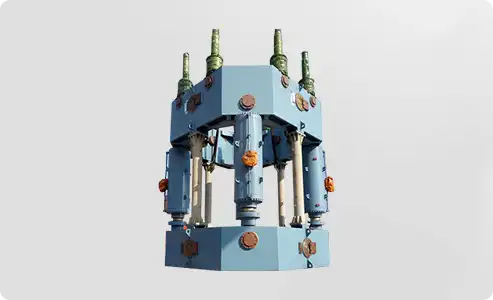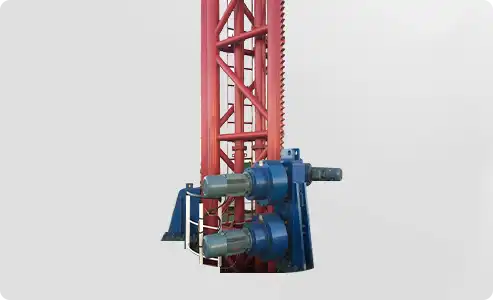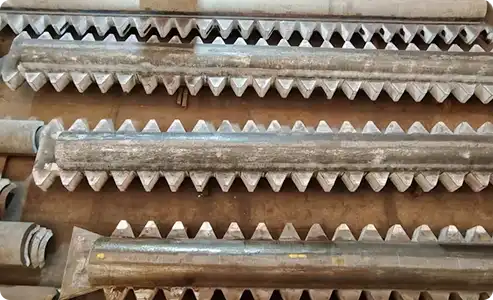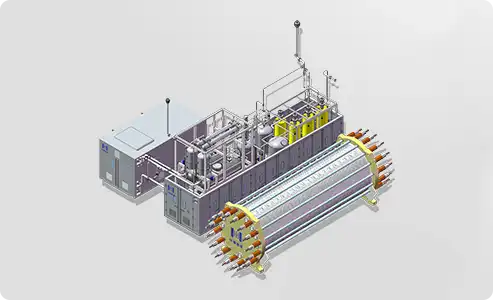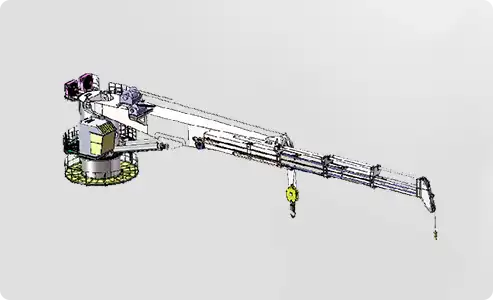Can Wind Assisted Propulsion Systems Help in Emissions Reduction?
Wind assisted propulsion systems can help in emissions reduction. These systems, which harness the power of wind to generate auxiliary thrust, are increasingly recognized as a practical step toward decarbonizing the shipping industry. By reducing a vessel's reliance on fossil fuels, a wind assisted propulsion system contributes to lower greenhouse gas (GHG) emissions, less air pollution, and significant fuel cost savings. As shipping stakeholders seek commercially viable ways to reduce their environmental footprint, integrating wind-based systems becomes a compelling option. CM Energy, leveraging its expertise in marine energy and sustainable propulsion solutions, is positioned to support this transition through advanced equipment design and technical insight, ensuring ships are future-ready with reliable and efficient wind support systems.
How wind assisted propulsion systems work with existing marine engines
The hybrid advantage: Mechanical and aerodynamic synergy
Modern vessels are increasingly adopting a hybrid approach, combining conventional propulsion systems with supplementary wind technology. A wind assisted propulsion system is not intended to replace engines entirely but to complement them. These systems harness aerodynamic forces—such as lift and drag—from sails, rotors, or kites to generate thrust. This added force allows the main engine to operate at lower loads, resulting in decreased fuel consumption.
The types of systems available—including rotor sails, suction wings, and rigid sails—utilize different aerodynamic principles to maximize efficiency. Rotor sails, for instance, employ the Magnus effect, where spinning vertical cylinders interact with the wind to generate a forward force. Suction wings use controlled airflow and boundary-layer suction to provide lift.
Integrating with onboard systems
Integrating wind technology with existing propulsion systems is largely seamless due to advanced onboard control software. These systems can automatically adjust the sail orientation, deployment, or retraction based on wind conditions, ship speed, and heading. Navigation systems are integrated with wind sensors, ensuring optimal utilization of wind power in real-time.
Such integration not only reduces emissions but also extends engine lifespan due to decreased mechanical stress. This becomes particularly valuable for operators in offshore wind support, bunkering services, and oil & gas vessels, where uptime and reliability are paramount.
Benefits and limitations of wind assisted propulsion systems for commercial fleets
Quantifying emission and fuel savings
While actual performance depends on multiple variables, average emissions reduction from wind propulsion installations ranges from 5% to over 20%. This reduction comes primarily from decreased engine fuel consumption during favorable wind conditions. On long-haul routes across open seas, such as transatlantic or Asia-Europe corridors, these systems perform especially well due to consistent and strong wind patterns.
For commercial fleets—bulk carriers, tankers, container ships, and heavy-lift vessels—the benefits go beyond just emissions. Lower fuel usage directly translates to cost savings. Over a vessel's lifetime, operators could save millions in fuel costs, offering an attractive return on investment for shipowners facing rising fuel prices and stricter emission regulations.
Physical and operational constraints
Despite the benefits, wind systems are not universally applicable. Some ship designs and operational routes may not support their integration. For instance, suction wings or hard sails require deck space and height clearance, which can conflict with loading cranes or bridge clearances. Retrofitting older ships may require hull reinforcement to manage the stress from wind loads, although these upgrades are generally feasible and affordable.
Additionally, wind availability is a variable factor. Ships operating closer to coasts or in unpredictable weather zones may not gain the same advantages as those on high-seas routes. Nonetheless, automation and real-time adjustments have made systems more adaptive, allowing even partial benefits to contribute to fuel efficiency.
Regulatory alignment and global trends
The growing regulatory pressure from the International Maritime Organization (IMO) and regional policies such as the EU’s maritime decarbonization package strongly favor ships equipped with waps. Regulatory metrics like the Energy Efficiency Existing Ship Index (EEXI) and the Carbon Intensity Indicator (CII) consider the benefits of alternative propulsion systems, encouraging adoption.
Ports and bunkering hubs are also starting to recognize wind-ready vessels as preferable due to their environmental credentials. This could lead to preferential berthing rights, reduced port fees, or access to green finance initiatives.
The future of wind propulsion in maritime sustainability
Compatibility with next-generation fuels and systems
Wind technology is not an isolated solution but works well with a broad spectrum of fuel types and propulsion setups. Whether a vessel operates on conventional marine diesel, LNG, methanol, or future fuels like hydrogen and ammonia, wind remains compatible as a supplemental energy source. It can help stabilize energy demand and reduce the burden on new fuel systems, which are often expensive or limited in availability.
Innovation, iteration, and scale-up
Wind propulsion technology continues to evolve, with prototypes scaling up and installations increasing globally. Kites, for example, are growing in size. Rotor sails are being optimized for better weight-to-thrust ratios. Automated deployment systems are being fine-tuned for lower latency and better responsiveness in changing wind conditions.
Shipbuilders are increasingly designing vessels with wind propulsion in mind. From hull shape optimization to deck layout adjustments, the new generation of ships is becoming “wind ready” from the outset. For TSC, this trend aligns with its broader mission to advance green ship design and manufacture intelligent, emissions-conscious marine systems.
Long-term market signals
The long-term value of waps extends beyond technical performance. Investors, charterers, and regulatory bodies are all assigning greater value to low-carbon shipping. With ESG criteria influencing asset valuation and fleet decisions, shipowners that invest in wind technologies position themselves more favorably.
Conclusion
In response to the shipping industry's need to decarbonize, wind assisted propulsion systems stand out as a pragmatic and effective technology. By reducing dependency on fossil fuels, lowering GHG emissions, and improving vessel efficiency, wind propulsion offers both environmental and commercial benefits. While not suitable for every ship, the range of technologies available—and their increasing adaptability—make them an attractive option for many in the maritime sector. As part of CM Energy’s broader vision for green marine innovation, these systems represent an important step toward a cleaner and more efficient shipping future. For inquiries or project collaboration, please contact us at info.cn@cm-energy.com.
References
1. International Maritime Organization – Revised Strategy on the Reduction of GHG Emissions from Ships
2. European Commission – Fit-for-55 Legislative Package
3. DNV – “Decarbonization Pathways for the Maritime Industry”
4. Lloyd’s Register – “Wind-Assisted Propulsion: Feasibility and Design Considerations”
5. IEA – “Maritime Transport and the Role of Wind Power”
6. ABS – “Wind Propulsion Systems: Emerging Technologies and Case Studies

